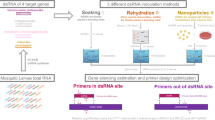Abstract
Concentration-dependent mortality effects were observed for three pure synthetic natural products (alkannin, shikonin, and shikalkin) and three acetylated derivatives of shikonin against Culex pipiens (Culicidae: Diptera) for the first time. The larvicidal properties of all naphthoquinones were evaluated under laboratory conditions against the larvae of the mosquito species C. pipiens biotype molestus, the anthropophilic biotype of the C. pipiens mosquito species. Experimental data of the tested toxicity of quinones revealed generally high efficacy where shikonin (3.9 mg/L) was the most active followed by shikalkin (8.73 mg/L) and alkannin (12.35 mg/L). The insecticidal performance of shikonin-acetylated derivatives was also investigated, aiming at the same time in the establishment of the relationships between the structure and the activity of shikonin-type compounds with larvicidal activity against C. pipiens. Results indicated that naphthoquinones, compared with other natural compounds with larvicidal activity, are very toxic against mosquito larvae and could be a potential source of natural larvicidal substances. Finally, bioassays with shikonin derivatives also revealed that although hydroxylic groups seem to play a secondary role in efficacy, the quinone moiety is essential.





Similar content being viewed by others
References
Ahn B-Z, Baik K-U, Kweon G-R, Lim K, Hwangl B-D (1995) Acylshikonin analogs: synthesis and inhibition of DNA topoisomerase-I. J Med Chem 38:1044–1047
Becker N, Petric D, Zgomba M, Boase C, Dahl C, Lane J, Kaiser A (2003) Mosquitoes and their control. Kluwer Academic, New York
Cheng S-S, Liu J-Y, Tsai K-H, Chen W-J, Chang S-T (2004) Chemical composition and mosquito larvicidal activity of essential oils from leaves of different cinnamomum osmophloeum provenances. J Agric Food Chem 52:4395–4400
Couladouros EA, Strongilos AT, Papageorgiou VP, Plyta ZF (2002) A new efficient route for multigram asymmetric synthesis of alkannin and shikonin. Chem Eur J 8:3398–4002
El Hag EA, El Nadi AH, Zaitton AA (1999) Toxic and growth retarding effects of three plant extracts on Culex pipiens larvae (Diptera: Culicidae). Phytother Res 13:388–392
Enserink M (2007) Tropical disease follows mosquitoes in Europe. Science 317:1485
Gorgees NS, Naqvi SNH, Rashan LJ, Zakaria SJ (1978) Effect of tepa, shikonin and ecdysone on the alkaline phosphate in the larvae Aedes aegypti (L.). Folia Histochemica et Cytochemica 16:51–56
Hemingway J, Ranson H (2000) Insecticide resistance in insect vectors of human disease. Annu Rev Entomol 45:371–391
Hemingway J, Field L, Vontas J (2002) An overview of insecticide resistance. Science 298:96–97
Jeyabalan D, Arul N, Thangamathi P (2003) Studies on effects of Pelargonium citrosa leaf extracts on malarial vector Anopheles stephensi Liston. Bioresour Technol 89:185–189
Jonsson NN, Reid SW (2000) Global climate change and vector borne diseases. Vet J 160:87–89
Joseph CC, Ndoile MM, Malima RC, Nkunya MHH (2004) Larvicidal and mosquitocidal extracts, a coumarin, isoflavonoids and pterocarpans from Neorautanemia mitis. Trans R Soc Trop Med Hyg 98:451–455
Lounibos LP (2002) Invasions by insect vectors of human disease. Annu Rev Entomol 47:173–191
Lundström JO (1999) Mosquito-borne viruses in western Europe: a review. J Vector Ecol 24:1–39
Michaelakis A, Mihou AP, Couladouros EA, Zounos AK, Koliopoulos G (2005) Oviposition responses of Culex pipiens to a synthetic racemic Culex quinquefasciatus oviposition aggregation pheromone. J Agric Food Chem 53:5225–5229
Michaelakis A, Mihou AP, Koliopoulos G, Couladouros EA (2006) Attract-and-kill strategy. Laboratory studies on hatched larvae of Culex pipiens. Pest Manag Sci 63:954–959
Michaelakis A, Theotokatos SA, Koliopoulos G, Chorianopoulos N (2007) Essential oils of satureja species: insecticidal effect on Culex pipiens larvae (Diptera: Culicidae). Molecules 12:2567–2578
Mitchell CJ (1995) Geographical spread of Aedes albopictus and potential for potential for involvement in arbovirus cycles in the Mediterranean basin. J Vector Ecol 20:44–58
Mongelli E, Coussio J, Ciccia G (2002) Investigation of the larvicidal activity of pothomorphe peltata and isolation of the active constituent. Phytother Res 16:S71–S72
Naqvi SNH, Sulaiman HMS, Afzal M, Mohammad AMS (1984) Comparison of sterility potential of Shikonin and its analogue with Tepa and Hempa, against Aedes aegypti L. Pakistan J Zool 16:175–180
Papageorgiou VP, Assimopoulou AN, Couladouros EA, Hepworth D, Nicolaou KC (1999) The chemistry and biology of alkannin, shikonin, and related naphthazarin natural products. Angew Chem Int Ed 38:270–300
Rahuman AA, Gopalakrishnan G, Ghouse BS, Arumugam S, Himalayan B (2000) Effect of Feronia limonia on mosquito larvae. Fitoterapia 71:553–555
Ratnayake R, Karunaratne V, Ratnayake Bandara BM, Kumar V (2001) Teo new lactones with mosquito larvicidal activity from three hortonia species. J Nat Prod 64:376–378
Shen C-C, Syu W-J, Li S-Y, Lin C-H, Lee G-H, Sun C-M (2002) Antimicrobial activities of naphthazarins from Arnebia euchroma. J Nat Prod 65:1857–1862
Sulaiman HMS, Naqvi SNH, Mohammad AMS (1978) Toxicity of some standard and prospective chemosterilants against Aedes aegypti (L.) larvae. Curr Sci 47:743–744
Tang W, Eisenbrand G (1992) Chinese drugs of plant origin. Chemistry, pharmacology, and use in traditional and modern medicine. Springer, Berlin
Trabousli AF, Taoubi K, Samih E-H, Bessiere JM, Rammal S (2002) Insecticidal properties of essential oils against the mosquito Culex pipiens molestus (Diptera: Culicidae). Pest Manag Sci 58:491–495
Trabousli AF, El-Haj S, Tueni M, Taoubi K, Nader NA, Mrad A (2005) Repellency and toxicity of aromatic plant extracts against the mosquito Culex pipiens molestus (Diptera: Culicidae). Pest Manag Sci 6:597–604
WHO (1981) Instructions for determining the susceptibility or resistance of mosquito larvae to insecticides. World Health Organization, Geneva
Yang Y-C, Lee S-G, Lee H-K, Kim M-K, Lee S-H, Lee H-S (2002) A piperidine amide extracted from Piper longum L. fruit shows activity against aedes aegypti mosquito larvae. J Agric Food Chem 50:3765–3767
Yang Y-C, Lim M-Y, Lee H-S (2003) Emodin isolated from Cassia obtusifolia (Leguminosae) seed shows larvicidal activity against three mosquito species. J Agric Food Chem 51:7629–7631
Acknowledgments
This project is cofinanced by the European Social Fund (75%), National Resources (25%)—Greek G.S.R.T. (PENED ‘01), and P. N. Gerolymatos S.A.
Author information
Authors and Affiliations
Corresponding authors
Rights and permissions
About this article
Cite this article
Michaelakis, A., Strongilos, A.T., Bouzas, E.A. et al. Larvicidal activity of naturally occurring naphthoquinones and derivatives against the West Nile virus vector Culex pipiens . Parasitol Res 104, 657–662 (2009). https://doi.org/10.1007/s00436-008-1242-7
Received:
Accepted:
Published:
Issue Date:
DOI: https://doi.org/10.1007/s00436-008-1242-7




